Falcon Acoustics LS3/5a Loudspeaker Review

This is one of the most significant versions of the classic BBC mini-monitor for a long time. David Price listens in…
Falcon Acoustics
LS3/5a Monitor Speakers
From £2,345 depending on finish
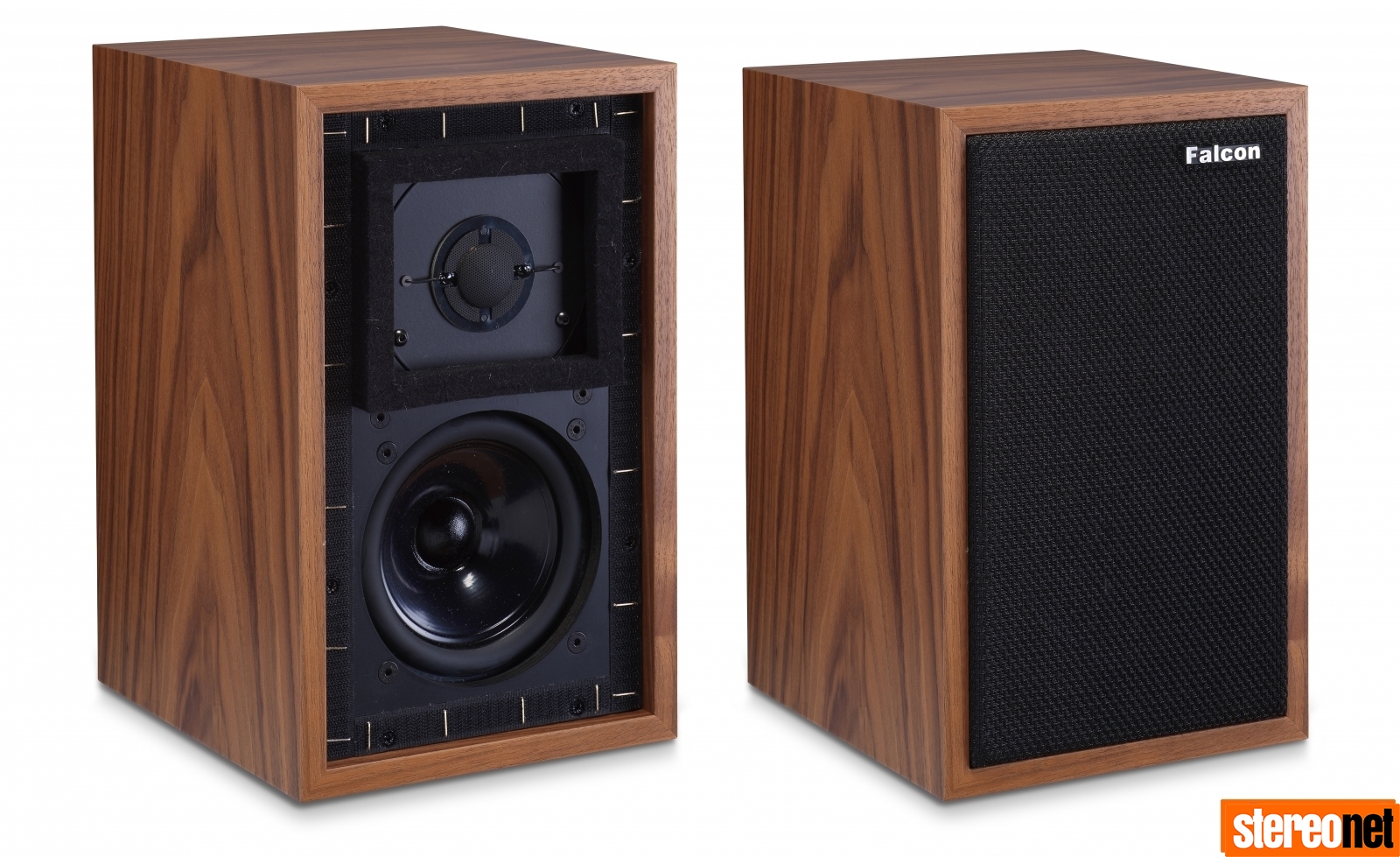
There are few hi-fi designs more iconic than the BBC LS3/5a loudspeaker. Although first launched in 1975, many audiophiles still swear by it in 2020, such is/was its purity of vision. Derived from a one-eighth scale loudspeaker designed to model studio acoustics including the legendary Maida Vale Studios, the idea was a create a small monitor that would sound accurate and open, while going down to 70Hz. In the late nineteen sixties, the BBC's Research Department at Kingswood Warren made it happen, and the LS3/5 was born.
Only about twenty were ever made, using early versions of the legendary KEF B110 midrange driver and T27 tweeter designed by Malcolm Jones at KEF. Two years later, the BBC was asked for a small speaker to be made commercially under license and looked again at the LS3/5. Changes to the KEF drivers meant a redesign was needed, and this time the job was given to the BBC Design Department – under the stewardship of Dudley Harwood, assisted by Maurice Whatton and Ralph Mills – the original “golden ears”. Mills was famous for being able to hear changes of just 1dB in a speaker as it was being developed. The result was the LS3/5a, still in production after all these years.
The BBC then made small numbers for reference purposes to maintain quality control with outside suppliers. Companies subsequently began to build the speaker under licence, the first two being Rogers and Chartwell, then Harbeth and Spendor, Audiomaster, RAM, Goodmans and KEF – and more recently Stirling Broadcast. Because the LS3/5a is so precisely specified, each version sounds close to the others – but it's wrong to claim they're all identical. Needless to say, arguments rage online and off about which is the best, and/or definitive version!
Falcon Acoustics has now joined the fray with its very own variant – and has a serious claim to it being the best, drawing on Malcolm Jones' designs and experience with the B110 and T27, and because of the company's unique remanufacturing and parts supply activities. It's now a leading international resource for components, supplying top-tier drive units, crossovers and a plethora of other bits to enthusiasts all around the world. The Falcon Acoustics LS3/5a tested here costs £2,345 per pair in a standard cherry or walnut natural wood veneers, or £2,445 in rosewood, burr walnut or yew natural wood veneers.
After Malcolm Jones founded Falcon Acoustics, he applied for a licence to manufacture the LS3/5a in 1982 but was rejected for providing sample crossovers that the BBC considered too good to successfully mass produce. Ironically these same crossovers – which were actual production versions for the RAM version which Falcon already made – were then supplied to Goodmans, and this company was duly awarded a licence. In other words, there was something of a cock-up in the approval process.
“Malcolm never forgot this”, says the company's present owner Jerry Bloomfield. He added:
So when we went back together to the BBC to apply for a licence many years later, we were understandably delighted when they couldn't have been more positive and supportive. We think this speaker is a quintessentially British product, and Falcon has a long history with the LS3/5a. We wanted to demonstrate this, and are the only LS3/5a manufacturer that sources all parts and components in the UK and EU to give the best quality and consistency possible.
UP CLOSE
The LS3/5a is a small 305x190x165mm infinite baffle design, so you're never going to get seismic bass from it. Although it was originally designed as a voice monitor, Jerry argues that it plays music to an exceptional standard, thanks to the extensive work that went into this speaker's development. Indeed, in terms of cost, the LS3/5a is undoubtedly one of the most expensive loudspeakers ever designed. It's also probably the only speaker ever to have had questions asked about it in the British Parliament; it was revealed it cost £100,000 in the early nineteen seventies, the equivalent of £1.7 million now. Spendor's Philip Swift told me recently that, “nobody ever put so much effort into doing a compact, low colouration loudspeaker as the BBC.”
The design brief was to produce something small, open and balanced for BBC Outside Broadcast vans. The speaker found its way into mobile TV control rooms for producers to monitor mixing desk output, after the Corporation began granting licences to British loudspeaker companies to manufacture. The 110mm KEF B110 Bextrene midrange driver and 19mm T27 SP1032 mylar dome tweeter were naturally specified, with thick strips of felt surrounding the latter to reduce secondary waves reflected by the cabinet edges.

The cabinet walls are 12mm birch plywood, braced on every joint with beech wood battens. Lots of work went into its design, to the point that different types of hardwoods were auditioned for the bracing. For example, one nineteen seventies report states that BBC engineers found Pirana Pine to have clearly audible colouration due to it resonating with the bass driver chassis, and was therefore rejected. The cabinet walls received a layer of Bostik sound deadening pads, and a layer of 18mm anechoic-grade foam went on the sides, along with two layers of deadening pads and a 25mm layer of foam on the top and bottom panels. The result was a heavy, highly acoustically inert box. “It is not possible to deviate from the original BBC specification and produce a genuine LS3/5a”, notes Jerry.
The speaker is effectively then the 'greatest hits' of early nineteen seventies driver technology, cabinet making techniques and – last but not least – crossover design. The latter is unusually complex for a small loudspeaker, using twenty-six elements. One reason for this was that the LS3/5a was designed to be consistent to a very tight specification between all manufacturers. In the event of a speaker blowing, for example, a sound engineer could take another single LS3/5a, swap it out with the broken unit and be confident that the voicing and monitoring setup would be identical again. The crossover itself is mounted behind the tweeter and damped by a thick felt pad to prevent resonance. Without such attention to detail, the speaker would have sounded less than the sum of its parts.

FALCON SWOOPS
Because Jerry wanted to produce what he calls “a no-compromise” classic, he decided to manufacture the 15-ohm version of the LS3/5a. In 1988 the speaker's nominal impedance dropped to 11 ohms. Still, Falcon Acoustics has replicated the original version because the company was already producing correct and graded versions of the higher impedance B110 and T27 drivers. Owners of the 11-ohm version can be reassured that Jerry will be supplying the lower impedance version soon, should they need spares at some point.
Jerry's message is that not all LS3/5as are created equal, pointing out that Falcon Acoustics hand-makes the original B110 and T27 drivers as specified by the BBC, using the original materials – to the original specification designed by Malcolm Jones, the original B110 and T27 designer. “These are unique to us”, he says. “We do not supply any other manufacturer. You won't find clone or OEM drivers in a Falcon LS3/5a. Also, the all-important crossovers that are hand-manufactured are built to a no-compromise standard, rather than just following the general BBC spec. The pair-matched transformer-style inductors made in the UK are therefore sized exactly as built by the BBC R&D Department originally. These are several points larger than the scaled-down commercial versions normally seen, giving the Falcon LS3/5a an enhanced bass response with lower saturation and distortion characteristics.”
UK-made polypropylene capacitors are used throughout, with very similar characteristics to the polycarbonate capacitors the BBC employed that are no longer available; most rivals use cheaper polyester capacitors instead. As for the loudspeaker's enclosure, “this is not something that can just be slung together amongst piles of kitchen cabinets; it's a specialist product”, Jerry explains. “We eventually found our present supplier, who shares our passion for these speakers – even to the extent of weighing plywood samples before starting a batch to ensure they are consistent and the correct grade density.”

Thanks to Jerry's close connection to Malcolm Jones, from whom he bought the company in 2009, he acquired the original reference material. “These are exercise books often written up on his kitchen table, full of meticulously detailed research and data going back to when he was at KEF from 1962 onwards. All the original research compiled as he worked up the designs for the B110, T27, B139, and the T15 – all the classic KEF units that were the foundation of so many famous loudspeakers from the nineteen sixties right through to the present day. We are fortunate to have notes of meetings with the BBC, how the LS3/5 and LS3/5a versions of the B110 were graded, full sets of detailed measurements of drivers and BBC working prototypes, drawings, suppliers. We also have full sets of BBC specifications and plans and many original BBC parts. We have LS3/5a speakers numbers 3 and 4 as references.”
The company started remaking the B110 in early 2012 and the T27 about a year later. Jerry had only just taken over from Malcolm Jones when he retired and spent a considerable amount of time picking his brain on every aspect of the production and design of these units. “Our capacity for curry and a glass or two of wine became quite notorious,” he adds, “so there was no question of him retiring gracefully! Neither of us realised how tricky remaking the LS3/5a would be. Reverse-engineering anything using faithfully remanufactured original materials and parts is far more difficult than making a clone driver or even an approximate new copy. It took us over two years sourcing materials, getting proper Bextrene remade to the original formula and to modern CNC production tolerances for consistency, etc. before we were both happy and Malcolm could sign it off for production.”
Jerry says the LS3/5a looks like an easy loudspeaker to make but isn't. “Everything has to be right. For example we control the temperatures at which the adhesives are applied, and the method and sequence of the coatings applied are very precisely executed. There really is no room for compromise or error. Because everything is done by hand, you really begin to appreciate the skill of the ladies at KEF who did all this before, especially when applying the damping coatings which, as Malcolm will tell you, is “all in the wrist”. The exact same disciplines apply to the T27 which took some two years before we could put it into production. Again, materials had to be specifically re-commissioned and old skills found again and re-employed.”
Unlike most modern speaker cabinets which are made of MDF, the LS3/5a cabinet is made from graded 9mm/12mm Baltic Ply, critically damped, with additional damping foam applied. Internally there are knot-free graded beech battens throughout, which have to be precisely glued to make the cabinet fully sealed, and give the cabinet structure and rigidity. The supplier and grade for all the wood components used are specified by Falcon Acoustics. The cabinet is made in Italy by a specialist, where some of the finest speaker cabinets in the world are made, says Jerry. Overall, there is nothing I can fault about this LS3/5a variant, from the packaging to the woodwork and even the smell – it's the real deal.
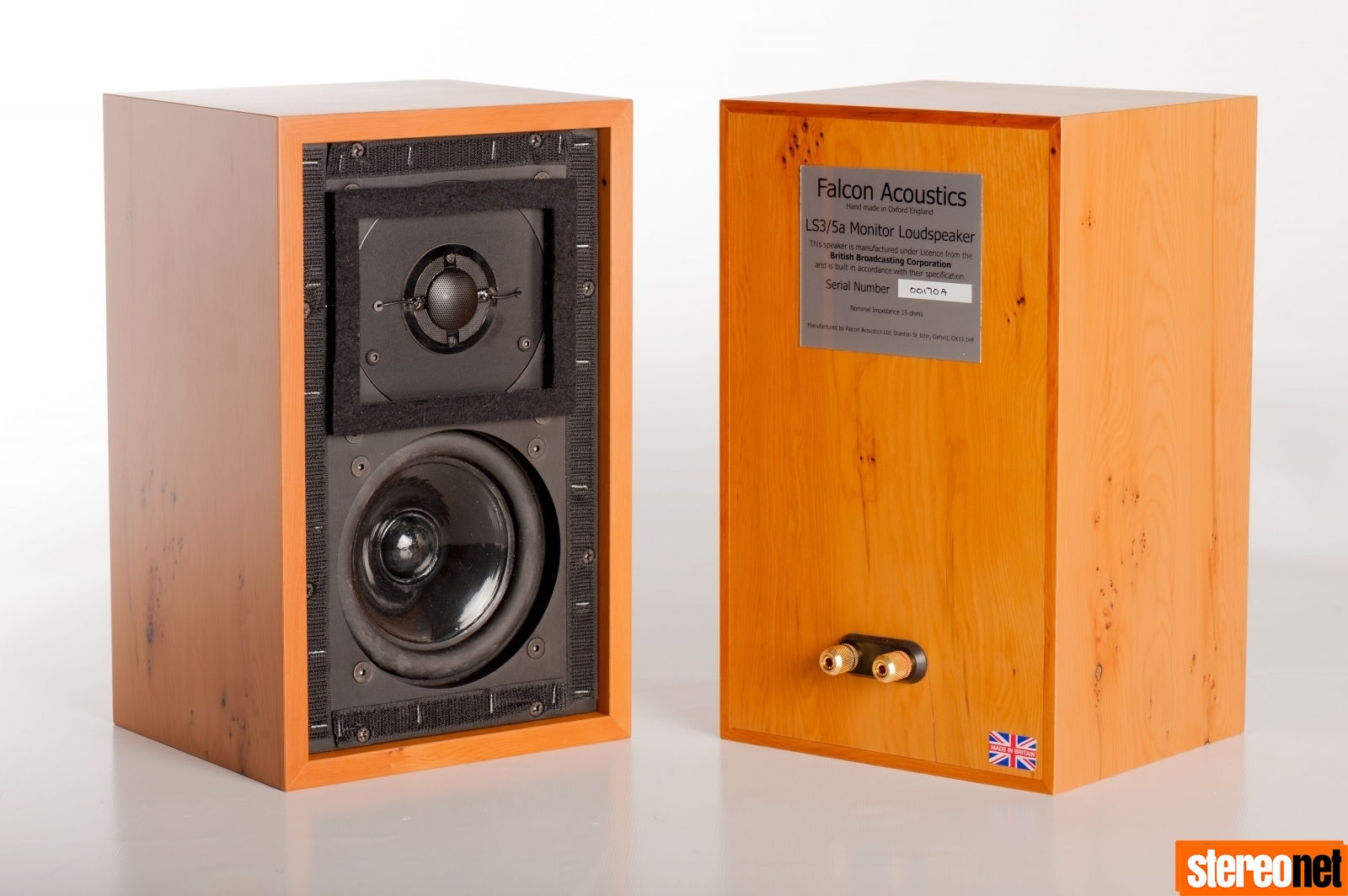
SOUND QUALITY
All LS3/5as do several things extremely well, with the most distinctive trait being the midband. Although not 'glass clear' in the way that a modern reference-grade floorstander like B&W's 802D3 is, this iconic design nevertheless has an exceptionally even and attractive tonality. Neutral enough to showcase the tonal differences between different types of recordings and recording studios, it still has a subtle 'patina' that's especially pleasant with acoustic instruments. The LS3/5a also images extremely well, being highly adept at placing instruments in an orchestra correctly in spatial terms, to give an accurate recreation of the recorded acoustic. And it's also surprisingly dynamic – up to a point – being able to accurately track the changing sound levels of a performance, including the subtlest of musical accents.
All well and good, but now for the disclaimer. This speaker started life as a near-field broadcast monitor, so if you're living in a converted warehouse, have one kilowatt of amplification and love drum' n' bass music or heavy rock – then frankly you should stop reading now. This mini-monitor simply does not thrive in such circumstances, nor was it ever supposed to. Rather, it was purposed for close conditions, primarily for classical music and lighter programme material. The aforementioned pros and cons hold for all variants of this little loudspeaker, but to my ears, the Falcon Acoustics LS3/5a is better in all the good respects, and not as flawed as other versions in the bad ones.
The LS3/5a's unique selling point was always its lucid midband, and it's even harder not to love on this Falcon version. Compared to my Quad ESL-989 electrostatics or Yamaha NS-1000M monitors, it's ever so slightly opaque in absolute terms. There's just a hint of softness and imprecision, but its colouration – such as it is – weaves a magic spell. Cue up Kate Bush's Snowflake for example, and this ballad sounds sublime. The close-miked piano work is beautiful to behold; there's a rich tone, and you can feel the harmonics cascading off and around the instrument. I also loved the purity of the voice; it lacks the grit of so many modern rivals, taking you right to the singer's very soul, rather than getting distracted by imperfections in the recording.

It's this combination of tonal smoothness and delicacy of touch that makes the Falcon Acoustics LS3/5a so special. There's no particular 'sweet spot' in this speaker, just a linear progression of sound that stretches high to low. Despite its tiny bass driver, the song's powerful piano cadences are full of body and have a rich, sonorous texture. Indeed this speaker goes lower better than you'd imagine – of course, it can never match a properly designed floorstander in the bass stakes, but you're not constantly being reminded that it's a lowly mini-monitor. Upper bass is excellent – sounding even, taut and solid – but of course, there's a cut-off point in the mid-bass below which this speaker simply does not go.
Thanks to its excellent and accurate stereo imaging, the Falcon Acoustics LS3/5a can easily fill medium-sized rooms with sound. For example, the classic rock of Crosby, Stills, Nash's Wooden Ships was rendered with a superlative sense of perspective. This speaker doesn't push the recorded acoustic out at you, but rather invites you to peer deep inside. Although things were a little smaller in scale compared to my larger reference speakers, everything was kept in perfect proportion. Again, human voices were handled majestically – both lead and backing vocals hovered in space above the band, completely separate. But it's only when you give this loudspeaker a full orchestra to reproduce that you really hear its spatial genius; the Berlin Philharmonic playing Beethoven's Pastoral Symphony was a tactile delight, with the string section so clearly resolved that it could have been nailed to my listening room wall.
Although the LS3/5a runs just a single 110mm mid/bass driver in a tiny, sealed box, it proves startlingly good at dynamics, at least at normal listening levels. It won't quite blow your wig off, but in normal circumstances gives a really engaging and articulate sound that's never less than open and unfettered. The brooding menace of Debussy's Submerged Cathedral was beautifully carried, with all the subtle piano accenting that gives this piece such poignancy. Move over to something completely different, and this same ability positively lit up The Who's Won't Get Fooled Again. The song is like a simmering cauldron of emotion that's just about to blow its lid, and this little loudspeaker brilliantly captured its controlled anger. It's not so much about the massive, crashing crescendos, as the way it caught the subtle dynamic and rhythmic cues that made the playing sound so visceral and alive.

The Falcon Acoustics LS3/5a sounds tighter and tauter than the many earlier variants I have tried through the years. It brings a sense of solidity and grace under pressure that's new to me. This inspires confidence, and you find yourself less focused on playing music that you think will sound good on this little loudspeaker. Indeed, I broke my heavy rock 'curfew' and cued up The Rain Song by Led Zeppelin. I've heard other LS3/5as lose the plot with programme material such as this, especially when played at high volume, but the Falcon design kept on working its magic. Despite giving an ever-so-slightly soft-focused sound, it was still loads of fun to hear. It may lack the outright scale, punch and bass extension of bigger, more modern boxes but its excellent vocal and midrange timbre never stopped wowing me.
Thanks in no small part to its excellent drive units and taut, infinite baffle cabinet, the Falcon Acoustics LS3/5a was actually quite fun with dance music – something I never thought I'd say about this design. It starts and stops crisply, and there's very little overhang. As a result, I found myself enjoying repetitive, beat-driven technopop like Too Strong for So Long by Manix. It proved surprisingly fleet of foot, showing a real interest in getting into the groove. I loved its handling of the shuffling bass drum, on and off the beat. Of course, I'm not advocating people giving up their Klipsch La Scala AL5s quite yet, but this is the only LS3/5a I've heard that doesn't get felled by music such as this. Every day is a school day, as they say.
Of course, I don't want to mislead readers into thinking that this is a great all-rounder that beats all the best modern competition at everything. Let's not forget that this is effectively a brilliantly remanufactured fifty-year-old loudspeaker, one that has huge charms, but also some weaknesses too. It's a fair deal better than other LS3/5as I've heard on powerful, bass-driven dance music, but still no match for serious modern fare such as Acoustic Energy's AE500 in this respect. When you really crank up the volume, there's a sense that the drivers are working harder than is ideal. Yet when all is said and done, this new Falcon Acoustics version has huge appeal nonetheless.
__large_full.png)
THE VERDICT
 Headbangers and clubbers need not apply, but if you're already an LS3/5a fan, or simply looking for something a bit special for a smallish listening room, then the Falcon Acoustics version has real appeal. Joyous on vocals and acoustic or orchestral music, it's surprisingly capable with other genres too. It oozes class yet isn't too sophisticated for its own good. And best of all, this is surely the finest version of an iconic design – at a surprisingly affordable price. Hear it if you possibly can.
Headbangers and clubbers need not apply, but if you're already an LS3/5a fan, or simply looking for something a bit special for a smallish listening room, then the Falcon Acoustics version has real appeal. Joyous on vocals and acoustic or orchestral music, it's surprisingly capable with other genres too. It oozes class yet isn't too sophisticated for its own good. And best of all, this is surely the finest version of an iconic design – at a surprisingly affordable price. Hear it if you possibly can.
For more information, visit Falcon Acoustics.
- Karma AV
Distributor
David Price
David started his career in 1993 writing for Hi-Fi World and went on to edit the magazine for nearly a decade. He was then made Editor of Hi-Fi Choice and continued to freelance for it and Hi-Fi News until becoming StereoNET’s Editor-in-Chief.
Posted in:Hi-Fi Loudspeakers Bookshelf / Standmount Applause Awards 2020
Tags: falcon acoustics karma av
JOIN IN THE DISCUSSION
Want to share your opinion or get advice from other enthusiasts? Then head into the Message Forums where thousands of other enthusiasts are communicating on a daily basis.
CLICK HERE FOR FREE MEMBERSHIP




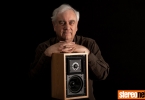
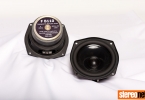
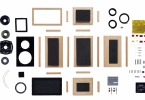
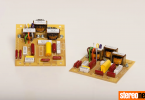



__thumbnail_gallery_image.png)




